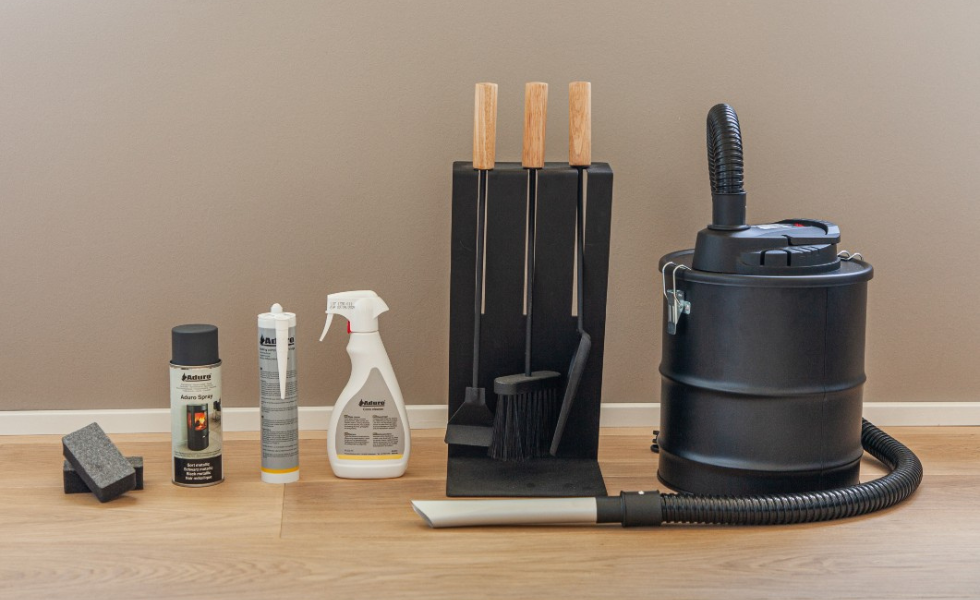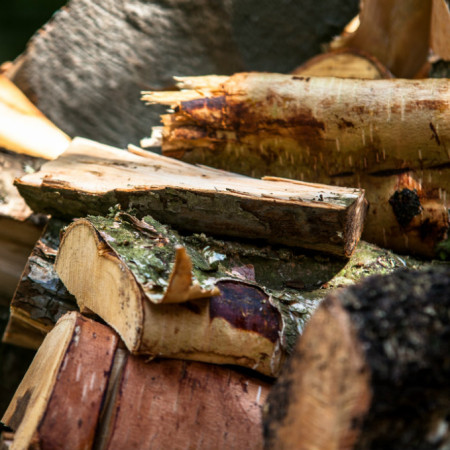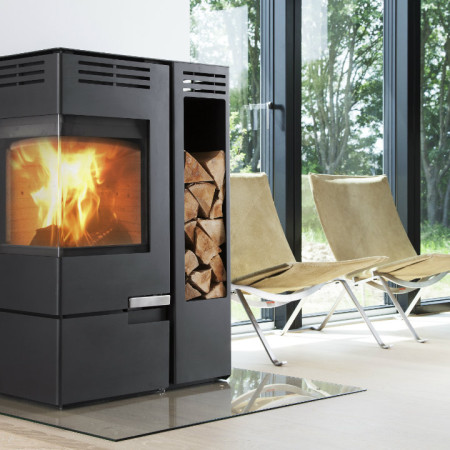Maintenance of your wood burning stove
Like so many other things, wood-burning stoves last best when they are regularly maintained and cleaned. Cleaning from top to bottom doesn’t have to take long, and the more often you maintain your stove, the easier it will be to clean.
Before you clean the stove, you have to make sure:
- That the stove is cold.
- That there are no embers.
- Only use appropriate tools.
1. Flue pipe
The flue pipe of the stove must be tightly connected to the stove itself to optimise smoke emission, which also limits soot on the surface of the stove. The flue can be cleaned through the door, or alternatively through the cleaning opening in the flue. The flue can also be removed from the stove for easy cleaning.
The flue guide plate, which is the top insulating brick in the firebox, can be removed to allow free access to the top of the stove.
Flue cleaning should be done once a year or more often, depending on how much the stove is used. This work can be ordered from your chimney sweep.
2. The fire box
To ensure stable and smooth operation, the stove requires light, regular cleaning. This should be done approximately every three days, depending on how often the stove is used. Feel free to use an ash vacuum cleaner.
Insulation tiles in the firebox are naturally worn and should be replaced when cracks of more than 5 millimetres appear. The durability of the tiles depend on how much you use the stove. You can replace the tiles yourself. You can also buy whole tiles so you can copy the worn ones.
3. Glass window
Soot on the glass is easily removed with a damp cloth that you dip in the cold ash from the stove and rub on the sooty glass. You can easily remove it with a moist cloth which you dip in ashes from the stove and rub on the sooty glass. You can find cleaning products here.
Problems with sooty glass might be caused by one of the following things:
- Secondary air inlet control hasn’t been opened enough
- You’re firing with moist firewood (max. 18%)
- There isn’t sufficient draft in the chimney
- Lighting a fire is not done correctly. Make sure you get the fire going, so the chimney will be warm from the beginning, and leave the door slightly open for the first 5-10 minutes.
4. Gaskets
Regularly check that the seals around the glass and door are correctly seated. Over time, the gaskets become worn and should be inspected. If they are leaking, they should be replaced, as it is essential that the stove is tight.
5. Aspirotor
The wood burning stove’s aspirotor should be cleared of ashes, since soot and ashes from the convection pipes fall down and settle on the smoke exhauster.
6. Air wash control
Air wash in a wood burning stove is air which runs down the stove glass and minimise soot on the glass. When using the air wash control function, it is important that the door is built in a solid material which fits tightly into the frame. Air wash facilitates cleaning.
7. Ash pan
The ash pan should be emptied twice a week, depending on how often you use the stove. You have to open the door to access the ash pan. Remember to clean the ash pit too, since there’s a risk that ashes accumulate in the back. This can prevent the ash pan from sitting where it’s supposed to and the door from shutting tight.
Note: Always leave a layer of ashes in the bottom of the stove. It insulates the firebox and makes it easier to light a fire.
8. Cleaning and repairing the surface
The surface of the stove is best maintained by simply vacuuming it with a brush nozzle or dusting it off with a soft, dry cloth. Do not use spirits or other solvents as this will remove the paint.
When wiping the stove with a cloth, you should also wipe the dampers and handles. Make sure to pull the dampers all the way out – if possible – as compressed ash can hide behind them.
The stove is painted with a heat-resistant spray paint that can withstand temperatures up to 500 degrees centigrade. The stove can easily be refreshed with this type of paint if the surface becomes scratched or worn. Aduro Spray can be purchased here.




